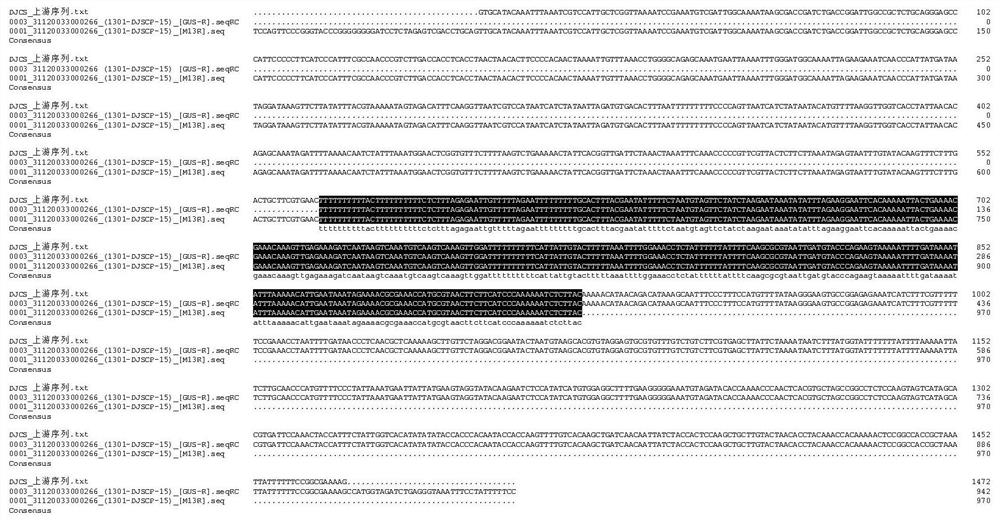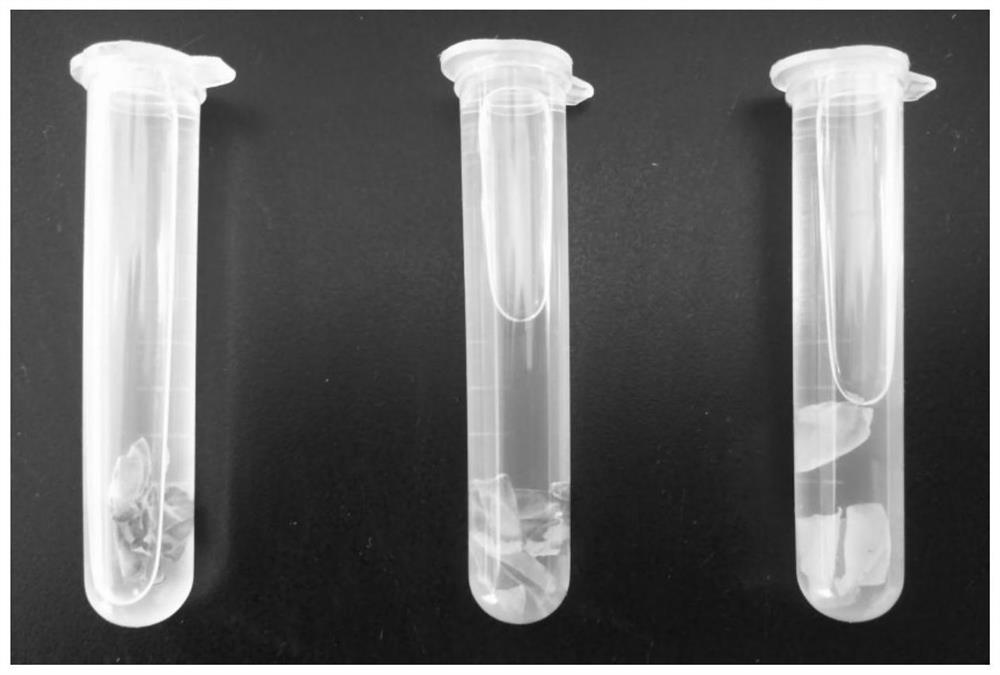Rhododendron hybridum petal RhCHS gene promoter and flower color breeding application
A rhododendron petal and promoter technology, applied in the field of genetic engineering, can solve problems such as insufficient research on CHS gene promoters
- Summary
- Abstract
- Description
- Claims
- Application Information
AI Technical Summary
Problems solved by technology
Method used
Image
Examples
Embodiment 1
[0022] Embodiment 1, rhododendron RsCHS gene promoter cloning
[0023] (1) DNA Extraction of Rhododendron Rhododendron
[0024] The petals of the red Belgian rhododendron used in the experiment were collected from Ningbo Beilun Yirun Flower Co., Ltd. The sampling plants are required to be healthy, with luxuriant flowers and bright colors, and the experimental petals are required to be clean and well-proportioned, with uniform color and no insect spots. The petals of living plants are first cleaned with a washing bottle to clean the floating dust on the surface, and the petals are collected and quickly frozen in liquid nitrogen. Frozen petal samples were extracted in the laboratory using CTAB method to extract Rhododendron genomic DNA for future use.
[0025] (2) Tail-PCR primer design and verification
[0026] Referring to the instructions of the Genome Walking Kit (CodeNo.6108) kit, design 3 R-terminal primers SP1, SP2, and SP3 (Table 1), pair with 4 random primers in the ...
Embodiment 2
[0041] Example 2, analysis of cis-acting elements of the RhCHS gene promoter of Rhododendron Rhododendron Rhododendron Rhododendron
[0042] With the help of PlantCARE, cis-acting element analysis was performed on the obtained 1477 promoter sequences. The name, quantity and position of the cis-element are shown in Table 2, figure 1 shown.
[0043] Table 2: Types, positions and quantities of cis-acting elements in the RhCHS gene promoter of the red Belgian cuckoo
[0044]
example 3
[0045] Example 3, construction of recombinant vector
[0046]The pCambia1301 vector was digested with PstI and NcoI, the 35S Promoter in front of the GUS gene was excised, and the vector backbone was recovered for recombination reaction with the CHSP fragment. The reaction product was transformed into Escherichia coli DH5α, coated with a Kana resistant plate, cultured overnight at 37°C, and 8 resistant colonies were picked. After positive colonies were identified by PCR using the above amplification primers, clone No. 15 was picked for sequencing. Bidirectional sequencing primers were M13-R:CAGGAAACAGCTATGAC, Gus-R:GAAAAGGGTCCTAACCAAGA.
[0047] The results showed that the promoter sequence obtained in the recombinant vector was completely consistent with the promoter sequence obtained in the Tail-PCR experiment, which proved that the recombinant vector was constructed successfully. For the sequencing results and analysis results, see figure 2 .
PUM
 Login to View More
Login to View More Abstract
Description
Claims
Application Information
 Login to View More
Login to View More - R&D
- Intellectual Property
- Life Sciences
- Materials
- Tech Scout
- Unparalleled Data Quality
- Higher Quality Content
- 60% Fewer Hallucinations
Browse by: Latest US Patents, China's latest patents, Technical Efficacy Thesaurus, Application Domain, Technology Topic, Popular Technical Reports.
© 2025 PatSnap. All rights reserved.Legal|Privacy policy|Modern Slavery Act Transparency Statement|Sitemap|About US| Contact US: help@patsnap.com



